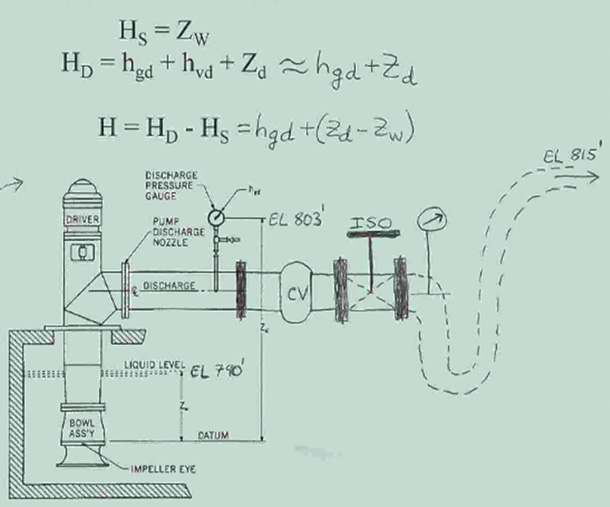08/29/2012
Part 1 (Pumps & Systems, August 2012) discussed an example in which neglecting corrections for velocity head and gauge elevation did not introduce significant errors in the calculations. Part 2 explores an application for which the error would be unacceptably large if velocity head and gauge elevation were ignored. This application involves a vertical turbine pump with a discharge gauge reading 30 psig, or 30 x 2.31 = 70 feet. The elevation difference between the gauge and the water level is 803 - 790 = 13 feet. When added to correct the pump head, the new head is 70 + 13 = 83 feet.
 Application from Part 1
Application from Part 1 Figure 1. New application
Figure 1. New application.jpg) Figure 2. Pump curve
Figure 2. Pump curve
